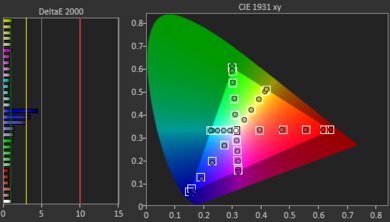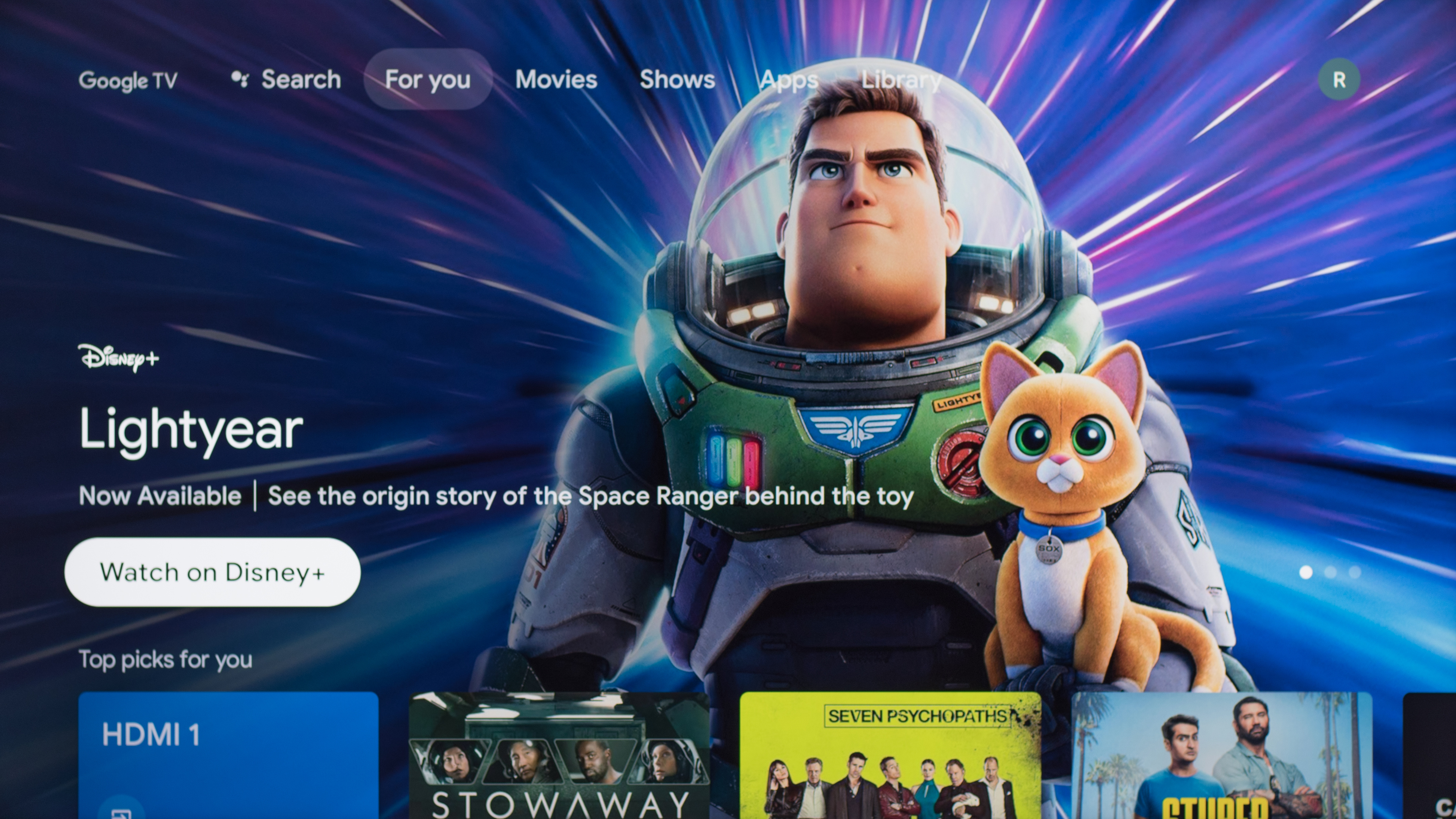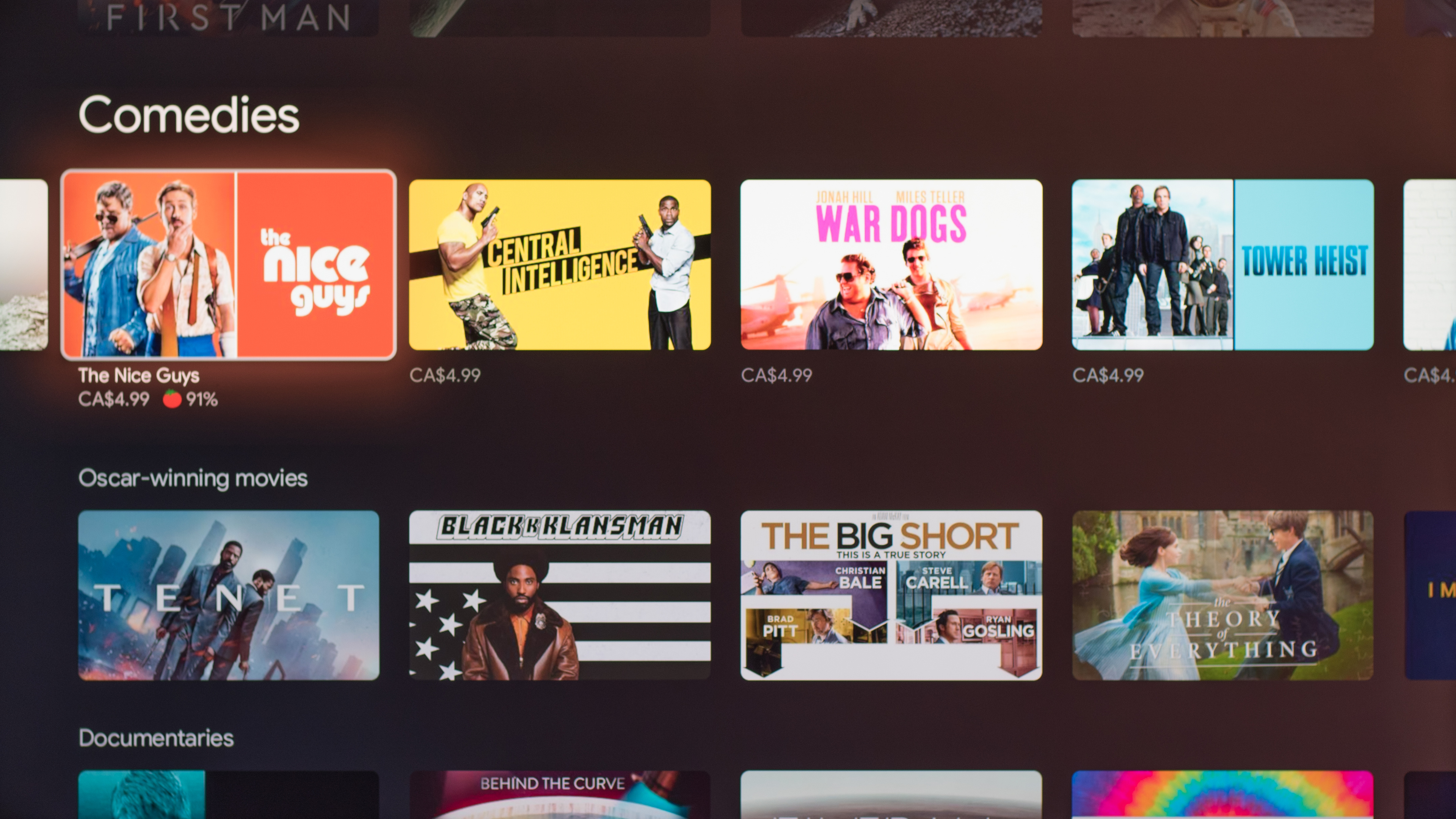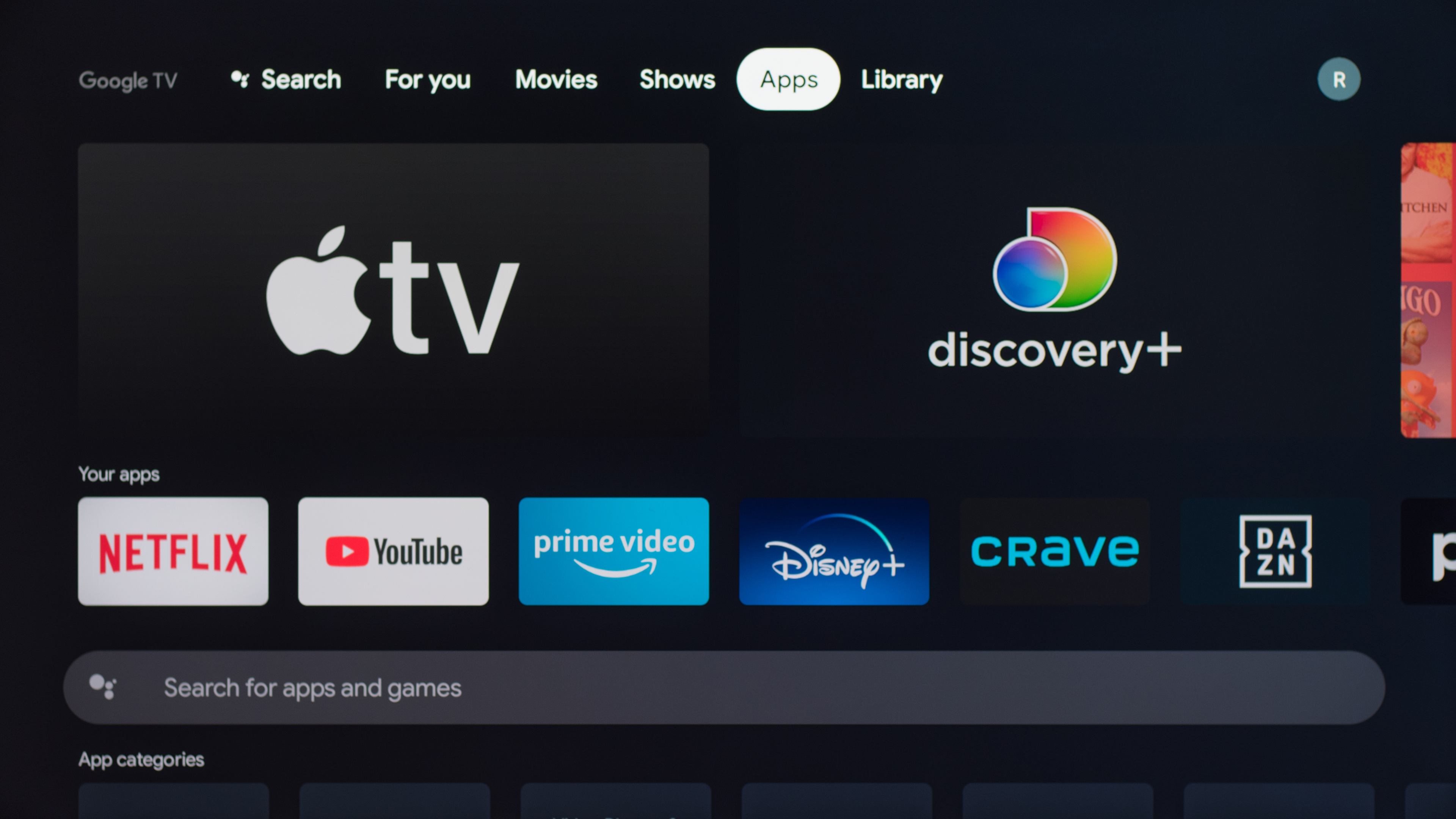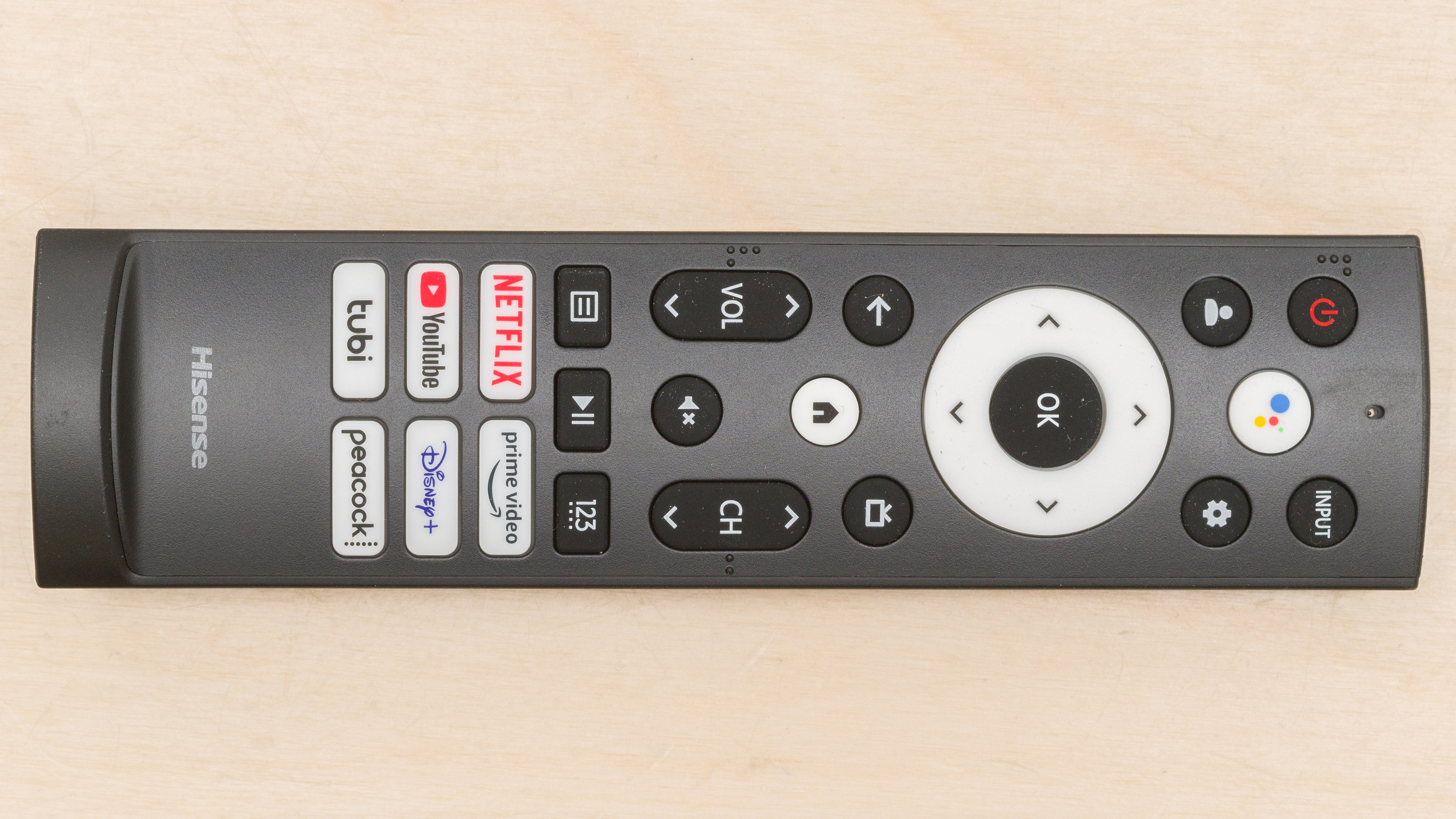To try to better understand how long a TV should last, we're running 100 TVs through an accelerated longevity test for the next two years. We've just posted our results after eight months, see our latest updates.

We've bought and tested more than 20 Hisense TVs. Hisense has been growing in popularity over the years, and even though they started as more of a budget company, they're competing with bigger brands now. Hisense TVs offer great value for their price, so you won't break the bank buying one. They've recently started to add gaming features like variable refresh rate (VRR) support, so they compete with some other brands. However, their TVs can also suffer from quality problems like uniformity and motion issues.
Like most brands, Hisense has announced their 2023 lineup and will start releasing their new models soon, so vote on which ones you want us to buy and test first. To learn more about what Hisense has planned for their 2023 models, check out our 2023 TV lineup page.
Updates
- 09/22/2023 Hisense U7K/U75K reviewed
- 09/18/2023 Hisense U6K reviewed
- 09/07/2023 Hisense U8K reviewed
- 08/24/2023 Hisense A65K reviewed
- 10/17/2022 Hisense U7H reviewed
Best Hisense Smart TVs
-
Best Hisense TV
Mixed Usage8.5Movies9.3TV Shows8.3Sports7.7Video Games8.3HDR Movies8.8HDR Gaming8.2PC Monitor8.0Hisense's flagship ULED lineup consists of a few different TVs, with the top-end and best Hisense TV we've tested being the Hisense U9DG. It's a unique LED TV that combines two separate LCD layers, one color and one grayscale, to achieve much deeper blacks than single-panel TVs are capable of. This results in deep, inky blacks close to an OLED, with nearly perfect uniformity and no blooming around bright objects. You get the best of both worlds with this TV, as it also has a wide viewing angle, making it a great choice for a wide seating arrangement as everyone sees a consistent image no matter where they sit.
While it's Hisense's top-of-the-line TV, there are some drawbacks. It's only available in a 75-inch size, and because this is Hisense's only TV to use this dual-panel technology, you can't find something smaller if you want it. It doesn't get bright in HDR either, so bright highlights aren't as bright as they should be, although they still stand out well thanks to the incredibly high contrast ratio. Unfortunately, this is also an older model and increasingly difficult to find. Hisense seems to have abandoned the dual-layer technology used in this TV, as all their new models use Mini LED backlights instead.
-
Best Upper Mid-Range Hisense TV
Mixed Usage8.3TV Shows7.7Sports8.2Video Games9.0HDR Movies8.3HDR Gaming9.0PC Monitor8.7If you don't need the high-end Hisense U9DG and prefer something from their upper mid-range price category, you won't lose much as they still make great TVs in that range. The Hisense U8H is one of Hisense's highest-end 4k TVs. While it doesn't deliver the same black levels as the U9DG, its Mini LED backlight and great local dimming feature deliver a similarly impressive experience. It's available in a range of sizes from 55 up to 75 inches, and all three sizes deliver a nearly identical experience, meaning you can find the perfect size for your needs. HDR content looks amazing thanks to its wide color gamut and amazing HDR color volume, delivering a fantastic wide range of colors, so your favorite content looks its best. It also has fantastic peak brightness in HDR, and thanks to its impressive local dimming feature, blacks look black and uniform in a dark room, and bright highlights stand out incredibly well.
It's also one of the best Hisense TVs for gaming because it has much better motion handling than the U9DG, so there's very little blur behind fast-moving objects, but there are issues with red ghosting in some games. It has HDMI 2.1 bandwidth on two of its HDMI ports, meaning it can take full advantage of the Xbox Series X and PS5 consoles, including 4k @ 120Hz support. Finally, it has low input lag and supports every variable refresh rate (VRR) technology, ensuring a responsive, nearly tear-free gaming experience.
-
Best Mid-Range Hisense TV
Mixed Usage7.5TV Shows7.1Sports7.3Video Games8.1HDR Movies7.5HDR Gaming8.1PC Monitor8.0The best mid-range Hisense TV we've tested is the Hisense U7H. It's a mid-range TV released as part of the 2022 lineup and delivers great picture quality. It offers many of the same features as the Hisense U8H but doesn't perform quite as well. It has excellent contrast and a decent full array local dimming feature, but it's not as good as the Mini LED backlight on the U8H. Still, it has good peak brightness that helps it deliver an impressive HDR experience.
Thanks to its low input lag and great selection of gaming features, it's great for gaming. In that regard, it's a step up over the Hisense U6H, as it has a 120Hz panel and HDMI 2.1 bandwidth, meaning you can enjoy 4k @ 120Hz gaming from the Xbox Series S|X or PS5. It also supports every variable refresh rate (VRR) technology, which helps reduce tearing in games.
-
Best Budget Hisense TV
Mixed Usage7.4TV Shows7.1Sports7.1Video Games7.8HDR Movies7.5HDR Gaming8.0PC Monitor7.7If you're on a tighter budget, Hisense has great low-cost TVs like the Hisense U6H that offer great value compared to similarly-priced models from other brands. Unlike the Hisense U7H and the Hisense U8H, you aren't getting the same high-end features and performance, but it's still very good. It uses the same quantum dot technology, which means it displays a wide range of colors and has remarkable out-of-the-box accuracy, so you won't have to get it calibrated for accurate colors.
Like other Hisense TVs, it comes with a VA panel with deep blacks, but its local dimming feature is just decent. Its HDR peak brightness is also just okay, so highlights don't pop as much in HDR, but that's what you have to expect for a budget-friendly model. As it's a 2022 TV, it comes with the updated Google TV platform, which is an upgraded version of Android TV, but if you don't like that, the Hisense U6GR is a similar model with Roku TV instead, but it's also harder to find.
-
Best Cheap Hisense TV
Mixed Usage6.3TV Shows6.9Sports6.9Video Games6.2HDR Movies5.6HDR Gaming6.6PC Monitor7.4While Hisense's ULED lineup offers the best value for their cost, especially in comparison to other brands, they also have a cheaper entry-level lineup (simply titled their 'UHD TV' lineup) that includes the Hisense A6H. It's different from the other TVs as it doesn't use quantum dot technology to display a wide range of colors, so it's limited in the colors it displays in HDR, but it still has excellent out-of-the-box accuracy in SDR. Another difference is that most of its sizes use an IPS panel, which has a wider viewing angle but a lower contrast ratio than the VA panels on the ULED models, so it's better for wide seating areas and isn't as good in dark rooms.
It includes Google TV as its smart platform and comes with the same features as the more expensive TVs, like a remote with a mic for voice control, so you can ask it to search for content or open apps. It also supports eARC if you want to connect a soundbar or receiver, which helps enhance your sound experience. It has no trouble upscaling lower-resolution content, which is good if you watch DVDs or cable TV.
Compared To Other Brands
-
Great value for their price.
Whether you're looking at Hisense's flagship or budget-friendly models, they offer better value than similarly-priced options from competitors. Hisense TVs are often among our mid-range and budget-friendly recommended TVs. -
Good for bright and dark rooms.
Hisense's options tend to perform well in both bright and dark environments. They usually have VA panels that display deep blacks, which are bright enough to fight glare in well-lit rooms. -
Starting to add gaming features.
As of 2021, Hisense introduced gaming features like HDMI 2.1 bandwidth and variable refresh rate support to some higher-end TVs. Although their 120Hz TVs have some motion issues, most gamers will still enjoy their TVs.
-
Narrow viewing angle.
Their ULED TVs mostly use VA panels with a narrow viewing angle, so they aren't good choices for wide seating arrangements. They don't use viewing angle technology like Samsung, so the image looks inaccurate from the side. -
Quality control issues.
The biggest downside to Hisense TVs compared to more expensive competitors is the quality control issues. There are often problems with uniformity and color accuracy, and one of the more common issues is red ghosting around moving objects.
Hisense vs TCL
TCL is Hisense's main competitor. They each offer good value in their TVs, so you can't go wrong with either. Hisense TVs tend to get brighter, and they have more 4k options. TCL is a better company if you need smaller TVs with a low resolution.
Hisense vs Vizio
Like Hisense, Vizio TVs are inexpensive. However, they still tend to cost a bit more than Hisense. Each company offers gaming features with its models, delivering deep blacks. Vizios usually have better black uniformity, but Hisense TVs have better smart features.
Hisense vs LG
Right now, LG and Hisense are offering different value. Hisense's LCD TVs are not only cheaper than LG's, but they're also much better. However, LG has the most varied offering of OLEDs of any manufacturer. Still, even the cheapest of their OLEDs is a bit more expensive than the best Hisense TV, so they're not competing on value.
Hisense vs Samsung
Samsung TVs are typically more expensive than Hisense TVs. That said, Hisense's LCDs are better than Samsung's offerings until you get to Samsung's high-end Neo QLED, but these are much more expensive than anything Hisense offers. Samsung also has excellent OLEDs for sale, but they're also in a different price bracket than what Hisense offers.
Hisense vs Sony
Sony has an excellent variety of TVs, making good LCDs and OLEDs. Sony TVs tend to have amazing image processing features, a weakness of Hisense TVs. However, Sony tends to be more expensive than LG and Samsung, so they're significantly more expensive than a 'budget' brand like Hisense. Like the other brands, Hisense has the edge in value and quality until you get to Sony's expensive high-end offerings.
Generally speaking, you can't go wrong with a Hisense TV. They offer the best value of any TV brand and perform well in dark and bright environments. There are extra features for gamers, and the smart platform is great. However, they aren't a good choice for wide seating areas, and you might run into some quality control issues after buying your Hisense TV.
Lineup
2023 Lineup
Hisense has announced an impressive lineup for 2023, refreshing all of their premium ULED models, starting with the U6K. The U7K and U8K both offer a higher 144Hz refresh rate for PC gamers, except the 100-inch U8K, which is still limited to a 120Hz refresh rate. They've also announced a new flagship model, the UX, which is only available in an 85-inch size. Advertised to produce 2,500 cd/m² peak brightness with a Mini LED backlight with more than 5,000 dimming zones, their new flagship should deliver an impressive HDR experience. Like most brands, Hisense is moving further away from the budget market, with many of their entry-level models carrying over from 2022.
Learn more about the 2023 Hisense lineup here.
Model names
Hisense uses a simple naming scheme. Starting with their 2021 TVs, the flagship ULED lineup has a U in front of the model names, while the entry-level models have an A. The first letter is followed by a number to indicate where it stands in the lineup; the last letter represents the year; Hisense uses G for 2021, H for 2022, and K for 2023. For example, the Hisense U8H is a high-end 2022 model, while the Hisense A6H is an entry-level 2022 model. If there's an R in the model code, it means it uses Roku TV instead of Android TV.
Hisense has completely different lineups outside of North America. Some of their naming conventions stay the same; the Hisense U8G is also available in the UK but uses a different smart system. Our results for Hisense TVs are only valid for the American models.
Hisense Smart Features
For the most part, Hisense uses Google TV as their smart platform in North America, but there are a handful of models with Roku TV instead, and they've even started selling some with Fire TV. Along with Sony, Hisense has been using Android TV for a few years and eventually transitioned their TVs to Google TV in 2022. It's great, as you can access many apps through the Google Play Store, and the menu navigation feels smooth.
Interface
Hisense's 2022 models use Google TV 11, and the interface is clean and pretty simple to navigate. It's divided into multiple rows, and each row presents content from different apps. These rows can be customized to your liking, as you can choose which apps are disabled and where. However, because there are so many rows, it can feel overwhelming, and it may take some time to fully navigate the interface if you're not used to it.
Ad-free
Past editions of Android TV were generally ad-free, but like other smart platforms, we're seeing more ads throughout the interface with Google TV. There are often large ads right on the home page, and you'll see suggested content. You can opt out of suggested content, which means you'll see untargeted ads instead.
Apps & Features
As the name suggests, Google TV has access to the Google Play Store, which offers a massive selection of apps to download, even more so than competing brands. You won't have any issues finding your favorite streaming apps; most common ones come pre-installed.
Voice Controls
The voice control gives you access to Google Assistant and Alexa, which is great. Some of the higher-end and newer Hisense models have mics built-in, so you can use the voice control by speaking directly to the TV or the remote. Don't worry; you can disable the mic on the TV if you're concerned about privacy. You can ask it to open apps, search for content, and change inputs, but you can't ask it to change some settings.
Remote
Hisense has redesigned their remote several times over the past few years, with a major overhaul in 2021. It's small as it lacks a Numpad, and there are shortcut buttons to popular streaming services. You also get quick-access buttons to the Google Assistant, the home page, and the settings menu.
Recent Updates
-
Jul 04, 2023: Added comparisons to LG, Samsung, and Sony, and refreshed the text for accuracy and consistency.
-
Feb 21, 2023: Verified our picks for accuracy, and refreshed the text. Updated the lineup section to include the 2023 lineup.
-
Oct 24, 2022: Replaced the Hisense U7G with the upgraded 2022 model, the Hisense U7H.
-
Sep 26, 2022: Replaced the Hisense U8G with the new model, the Hisense U8H, as it's a noticeable upgrade over last year's model.
-
Aug 25, 2022: Restructured article to recommend TVs based on their placement in Hisense's lineup; renamed the U8G to 'Best Upper-Mid Range'; added the U7G and the A6H to their respective categories; replaced the U6G with the newer U6H because it's easier to find; updated the Smart Features section.
Conclusion
Overall, Hisense offers something for everybody and generally at a low cost. Their ULED TVs are versatile for any use and have features like HDMI 2.1 bandwidth and variable refresh rate support. Thanks to their VA panels, they generally perform well in dark rooms, and they get bright enough to fight glare in well-lit rooms. However, no company is perfect, and Hisense's TVs can suffer from quality control problems like uniformity issues and motion artifacts. If you don't think that will bother you, you can't go wrong with a Hisense.















